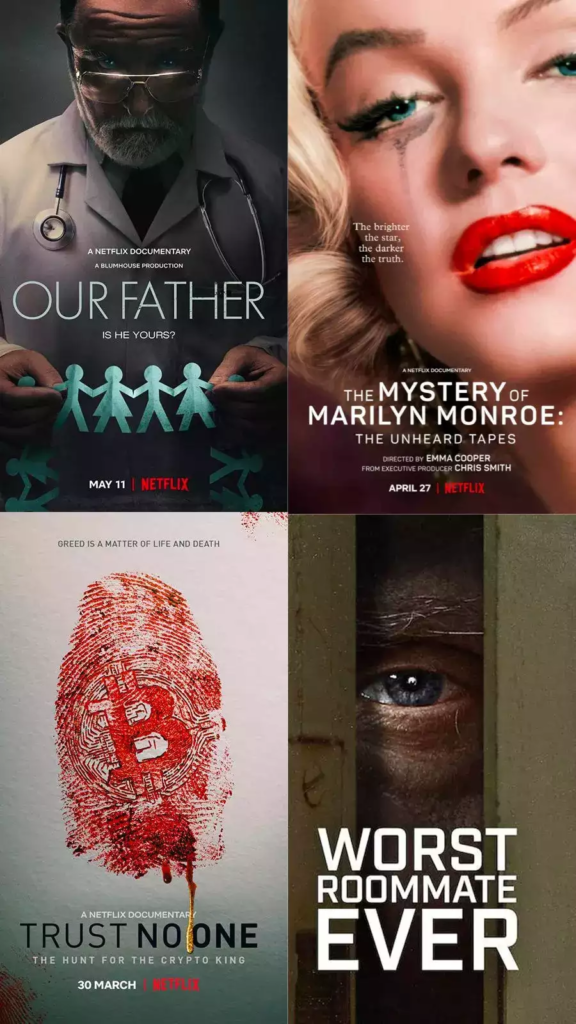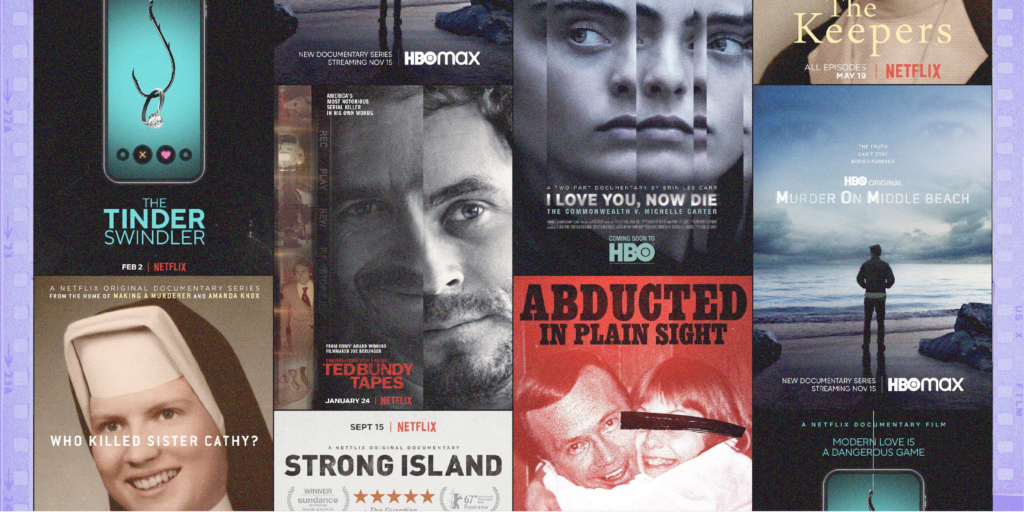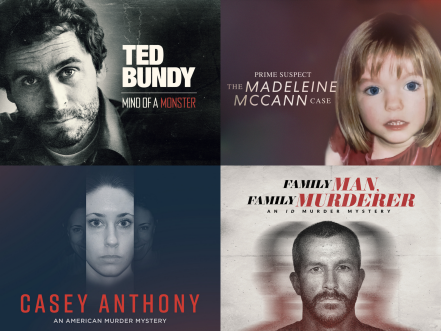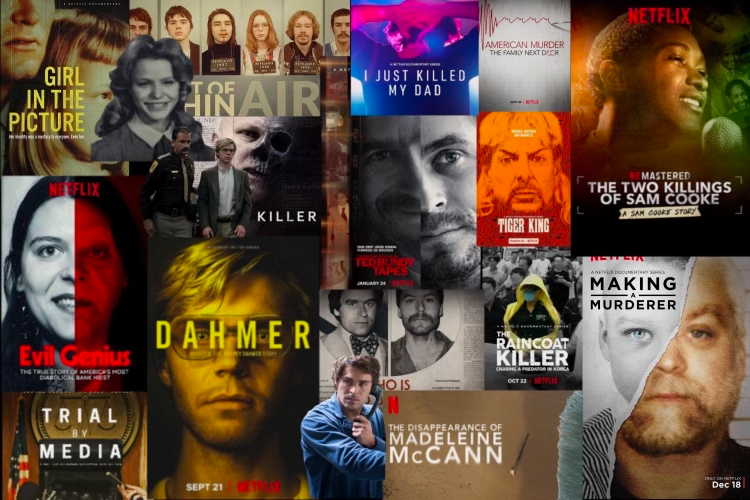True crime docuseries have taken the world by storm, captivating audiences with their gripping tales of real-life mysteries, criminal investigations, and courtroom dramas. This genre has surged in popularity over the past decade, thanks to the advent of streaming platforms like Netflix, Hulu, and Amazon Prime, which have made these stories more accessible than ever before. The impact of true crime docuseries on popular culture is profound, influencing everything from entertainment and media consumption to public perceptions of the criminal justice system. This article delves into the rise of true crime docuseries, examines their cultural significance, and explores the reasons behind their widespread appeal.

The Rise of True Crime Docuseries
Early Roots and Evolution
The fascination with true crime is not a new phenomenon. Its roots can be traced back to the 16th century with pamphlets and public executions serving as early forms of crime reporting. In the 20th century, the genre gained prominence through sensationalized newspaper accounts and books. However, it was the advent of television and the internet that transformed true crime into a dominant cultural force.
In the 1980s and 1990s, shows like “America’s Most Wanted” and “Unsolved Mysteries” brought true crime stories into the living rooms of millions. These programs paved the way for the modern true crime docuseries by blending real-life events with dramatic storytelling techniques. The introduction of 24-hour news cycles and the proliferation of cable networks further fueled public interest in crime stories.
The Streaming Era
The true crime genre reached new heights with the rise of streaming platforms in the 2010s. Netflix’s “Making a Murderer” (2015) is often credited with sparking the current true crime boom. The series, which chronicles the controversial case of Steven Avery, captivated viewers with its in-depth investigation and left many questioning the integrity of the criminal justice system.
Following the success of “Making a Murderer,” numerous other true crime docuseries gained popularity, including “The Jinx” (HBO), “Wild Wild Country” (Netflix), and “The Staircase” (Netflix). These series offered audiences unprecedented access to crime scenes, interviews, and courtrooms, making them feel like active participants in the investigation.

Cultural Significance of True Crime Docuseries
Shaping Public Perception of Crime and Justice
True crime docuseries have a significant impact on public perception of the criminal justice system. By highlighting cases of wrongful convictions, police misconduct, and systemic flaws, these series often prompt viewers to question the fairness and efficacy of the legal system. This scrutiny can lead to increased public demand for criminal justice reform and greater accountability for law enforcement agencies.
Case Study: The Central Park Five
The Netflix miniseries “When They See Us” (2019), directed by Ava DuVernay, dramatizes the story of the Central Park Five, a group of Black and Latino teenagers wrongfully convicted of a brutal assault in 1989. The series brought renewed attention to the case, highlighting issues of racial bias, coerced confessions, and prosecutorial misconduct. Its impact was profound, leading to widespread public outrage, calls for justice, and increased awareness of systemic racism in the criminal justice system.
Influencing Media and Entertainment
True crime docuseries have also influenced other forms of media and entertainment. The genre’s popularity has led to a proliferation of podcasts, books, and films that explore similar themes. Additionally, true crime elements have seeped into scripted television shows and movies, blurring the lines between fiction and reality.
Example: “Mindhunter”
The Netflix series “Mindhunter,” while a scripted drama, draws heavily from true crime narratives. It explores the early days of criminal profiling at the FBI and is based on the real-life experiences of agents who interviewed notorious serial killers. The show’s success demonstrates the symbiotic relationship between true crime docuseries and fictionalized crime dramas.
Social and Psychological Impact
The immersive nature of true crime docuseries can have profound social and psychological effects on viewers. These series often provoke intense emotional responses, from fear and anxiety to empathy and outrage. They also encourage viewers to engage in armchair detective work, analyzing evidence and forming their own theories about the cases presented.
The Psychology of True Crime
One reason for the genre’s popularity is its ability to tap into deep-seated psychological needs. True crime stories often provide a sense of closure by resolving mysteries and delivering justice. They also allow viewers to confront their fears in a controlled environment, providing a sense of catharsis.

The Appeal of True Crime Docuseries
Narrative Structure and Storytelling Techniques
True crime docuseries often employ compelling storytelling techniques to engage viewers. These include cliffhangers, dramatic reenactments, and suspenseful music. By structuring episodes like a thriller, with plot twists and revelations, these series keep audiences hooked from start to finish.
Example: “Tiger King”
“Tiger King: Murder, Mayhem and Madness” (2020) became a cultural phenomenon due to its bizarre and unpredictable storyline. The docuseries, which explores the rivalry between exotic animal park owners, captivated viewers with its larger-than-life characters and shocking plot twists.
Real-Life Drama and Authenticity
The appeal of true crime docuseries lies in their authenticity. Unlike fictional crime dramas, these series present real events, real people, and real consequences. This authenticity adds a layer of gravitas and emotional resonance, making the stories more impactful.
Example: “Don’t Fk with Cats”**
The Netflix docuseries “Don’t F**k with Cats: Hunting an Internet Killer” (2019) showcases the real-life efforts of internet sleuths to track down a killer. The series’ authenticity and the involvement of ordinary people in solving the crime added to its gripping narrative.
Societal Fascination with Crime
Society’s fascination with crime and criminals is a driving force behind the popularity of true crime docuseries. This fascination is rooted in a desire to understand the darker aspects of human nature and the motivations behind criminal behavior.
Example: “Conversations with a Killer: The Ted Bundy Tapes”
The Netflix series “Conversations with a Killer: The Ted Bundy Tapes” (2019) offers an in-depth look at one of America’s most infamous serial killers. The series’ exploration of Bundy’s psychology and the details of his crimes taps into the public’s enduring curiosity about criminal minds.

Ethical Considerations and Criticisms
Exploitation and Sensationalism
One of the primary criticisms of true crime docuseries is the potential for exploitation and sensationalism. Critics argue that these series can exploit victims and their families for entertainment purposes, reducing their trauma to a form of spectacle.
Example: “The Trials of Gabriel Fernandez”
The Netflix docuseries “The Trials of Gabriel Fernandez” (2020) faced criticism for its graphic depiction of the abuse and murder of an eight-year-old boy. While the series aimed to shed light on systemic failures in child protective services, some viewers felt it was too exploitative and sensationalized.
Impact on Legal Proceedings
True crime docuseries can also impact ongoing legal proceedings. By bringing widespread attention to certain cases, these series can influence public opinion and potentially affect jury pools. This raises ethical concerns about the balance between public interest and the integrity of the legal process.
Example: “The Case Against Adnan Syed”
The HBO docuseries “The Case Against Adnan Syed” (2019) revisits the case of Adnan Syed, who was convicted of murdering his ex-girlfriend Hae Min Lee. The series, along with the popular podcast “Serial,” brought significant attention to the case, leading to new legal developments and renewed scrutiny of the conviction.
Responsibility to Accuracy
Another ethical consideration is the responsibility of true crime docuseries creators to present accurate and unbiased information. Misrepresentations or omissions can lead to misinformation and skew public perception of a case.
Example: “Making a Murderer”
While “Making a Murderer” received praise for its in-depth investigation, it also faced criticism for alleged bias and selective presentation of evidence. Some viewers felt the series portrayed Steven Avery as innocent while ignoring key facts that suggested otherwise.

The Future of True Crime Docuseries
Technological Advancements
Technological advancements will continue to shape the future of true crime docuseries. Virtual reality (VR) and augmented reality (AR) could provide even more immersive experiences, allowing viewers to explore crime scenes and evidence in unprecedented detail.
Example: VR Crime Solving
Imagine a true crime docuseries that incorporates VR technology, allowing viewers to virtually walk through a crime scene and examine evidence. This could revolutionize the way audiences engage with true crime content, making them active participants in the investigation.
Diversity and Inclusivity
As the true crime genre evolves, there is a growing emphasis on diversity and inclusivity. Future docuseries are likely to explore a wider range of cases, including those involving marginalized communities and lesser-known crimes.
**Example: “Unseen”
“Unseen: The True Story of the Cleveland Strangler” (2016) is a docuseries that highlights the murders of women from marginalized communities. By focusing on underreported cases, the series brings attention to systemic issues and amplifies the voices of victims who are often overlooked.
Ethical Storytelling
The future of true crime docuseries will likely see a greater emphasis on ethical storytelling. Creators will need to navigate the fine line between informing the public and respecting the dignity of victims and their families.
Example: Victim-Centric Narratives
Future true crime docuseries may adopt a more victim-centric approach, prioritizing the perspectives and experiences of those affected by the crimes. This shift could lead to more respectful and responsible storytelling, ensuring that victims’ voices are heard and honored.
Conclusion
True crime docuseries have left an indelible mark on popular culture, reshaping the way we consume media, perceive crime, and engage with real-life stories. Their ability to combine compelling narratives with real-world implications has made them a dominant force in the entertainment industry. However, with this power comes the responsibility to approach the genre ethically and thoughtfully.
As the genre continues to evolve, it will be crucial for creators to balance the demands of entertainment with the need for accuracy, sensitivity, and respect for those involved. By doing so, true crime docuseries can continue to captivate audiences while contributing positively to our understanding of crime, justice, and human nature.
Read more about True Crime Docuseries here!
For more such content, keep visiting QAWire


